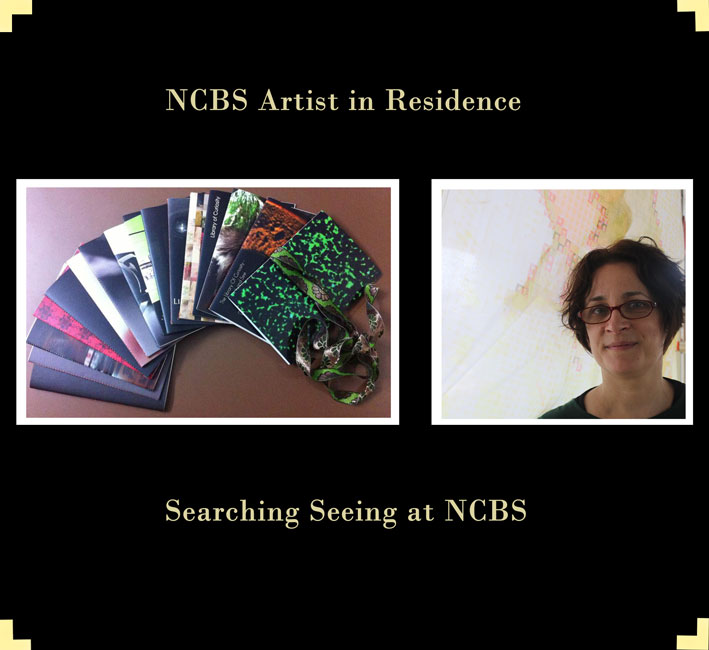Searching Seeing at NCBS
Searching Seeing at NCBS
Visual cultures in science evolve not only to truthfully describe or replicate reality but also to make it understandable and accessible. One could ask where the aesthetic value of a scientific image would lie -at the intersection of this search or somewhere far beyond it? Stefanie Reichelt’s practice both as a light microscopist and an artist uses photography as a tool to move from observation to perception. In her own words, ‘the visual exploration of the unknown and our feelings evoked by the mysterious’ are what she seeks to do with her camera.
Stefanie’s art residency at NCBS is part of the Goethe Institute’s bangaloResidency. As part of her residency she has produced a series of portraits of scientists, students and staff at NCBS. The scientific images of cells, fruit flies, cytoskeletal molecules and bees have been digitally woven into portraits. These ‘Transient Portraits’ are made up of myriad pixelated images, only by stepping back can one see the full image and the person it represents. Stefanie also worked with students at NCBS and Srishti School of Art, Design and Technology to produce a series of books which make up the ‘Library of Curiosity’. These books include scientific images, concepts, graphs, portraits, animals, wildlife and drawings and art photographs.
The portraits and the books are exhibited at the Southern Labs Complex at the National Centre for Biological Sciences on Dec 18, 2014 from 3 to 7 pm. Stefanie Reichelt is a Cambridge-based researcher and photographer. She has been the Head of the Light Microscopy Laboratory at the CRUK Cambridge Institute since 2005. Her research includes the development of new imaging techniques, which will enable the visualization of molecules in cells for cancer diagnostics. Stefanie is also founder and curator of ArtCell Gallery, which provides exhibition space Cambridge Biomedical Campus site for local artists and the science community.
About Stefanie Reichelt’s work –

Comments
Post new comment